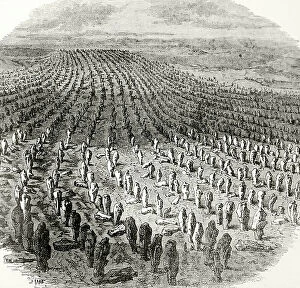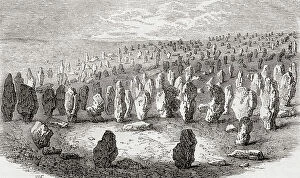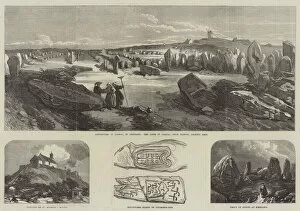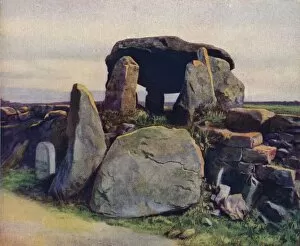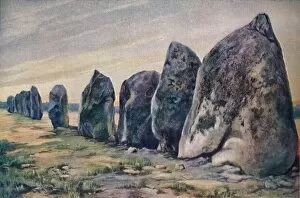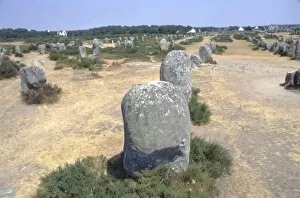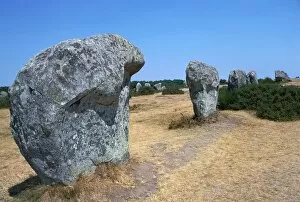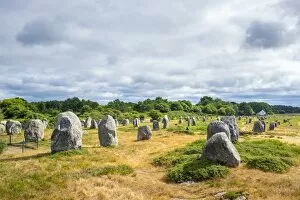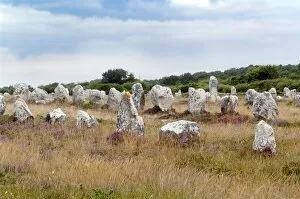Carnac Stones Collection
The Carnac Stones, located in the picturesque region of Brittany, France, have captivated visitors for centuries
For sale as Licensed Images
Choose your image, Select your licence and Download the media
The Carnac Stones, located in the picturesque region of Brittany, France, have captivated visitors for centuries. This enchanting engraving from the early 20th century showcases the Kermario Alignments, one of the most remarkable sights at Carnac. Renowned artist CM Dixon beautifully captures the grandeur and mystery surrounding these ancient megalithic structures. Dating back to as early as 4500 BC during the Neolithic period, these stone alignments are a testament to human ingenuity and craftsmanship. Stretching across vast landscapes, they leave us in awe of our ancestors' ability to create such precise formations without modern tools or technology. As we gaze upon this captivating artwork depicting the Alignments near Carnac, we can't help but wonder about their purpose. Were they markers for celestial events? Sacred sites for rituals and ceremonies? Or perhaps a way to honor ancestors? The Dolmen at Kermario depicted here takes us even further into history - an astonishing relic from around 3600 BC. These massive stones stand tall against time's relentless march, reminding us of humanity's enduring connection with nature and its mysteries. Intriguingly enough, not far away lie the Megalithic alignments at Menec - another extraordinary sight dating back to approximately 3400 BC. The precision with which these stones were placed is truly mind-boggling; it speaks volumes about our forebears' deep understanding of astronomy and their reverence for cosmic forces. The Neolithic standing stones at Alignements de Carnac continue to inspire curiosity among archaeologists and tourists alike. They offer a glimpse into an ancient world where spirituality intertwined seamlessly with everyday life. As we explore this artistic portrayal by CM Dixon showcasing the Alignments at Menez within Carnac itself, we can almost feel ourselves transported back in time - surrounded by towering monoliths that hold secrets yet untold. These enigmatic stones have stood witness to countless generations, their silent presence a testament to the enduring legacy of our ancestors.

